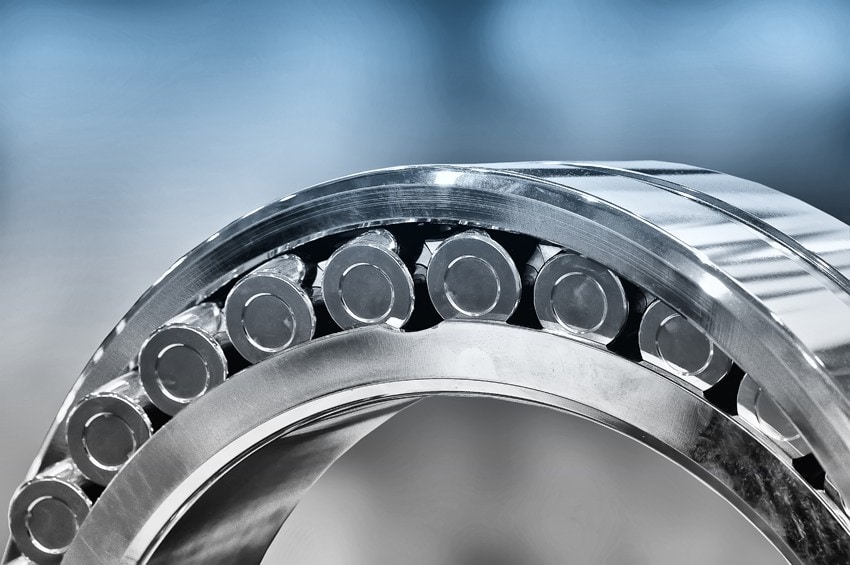In the wind turbine design and the design of their machinery components and subsystems, there are many approaches to reduce Levelized Cost of Electricity. In addition to manufacturing costs, the reliability of components as well as erection and maintenance concepts offer possibilities for cost reduction. We have accompanied the design of machine components of many turbines and have also designed entire wind turbines for our customers. Because we can cover the entire spectrum of design activities, we can find smart turbine design concepts with a broad perspective or go into detail when it comes to the optimization of individual components regarding costs or reliability.
What benefits do we offer you?
- design of the entire machine and consulting for the technical concept for wind turbines
- design and analysis of structural components
- specification of machinery parts
- detailed analysis of the life time of slewing rings
- load simulation for the certification according to recognized standards, e. g. IEC
- detailed analyses by employing multi-body simulation
- software solutions with well thought out workflows to reduce effort in the load simulation


Turbine Design
With farsight and attention to detail
In the nacelle and the rotor of wind turbines, a plethora of materials, connection elements and structural and machinery components are employed. For the design and analysis of the components and the resulting system, a broad spectrum of technical know-how is required. As an interdisciplinary team of civil and mechanical engineers, we can dynamically approach all challenges we are faced in this complex development environment.
What benefits do we offer you?
- conceptual design and consulting in the design of entire wind turbines
- analysis components according to current standards and guidelines, be it for cast or welded components or bolted connections
- design of structural components
- we find potentials for optimization and actively suggest design solutions and improvements
- we also offer the load simulation and can tune the controller to the rest of the design
- we securely bring the design through certification

Prototype design of a pitch-controlled 200 kW direct drive wind turbine for the Korean market

FE analysis of a main frame for a multi-MW wind turbine

FE analysis of a hub for a multi-MW wind turbine

FE analysis of a yaw sliding bearing

Slewing Rings
Reliability and transparence
The slewing rings in a wind turbine, especially the pitch bearings, are subjected to enormous loads that lead not only to material fatigue, but also to wear. We observe problems in the field that create the need for greater clarity about the reliability of slewing rings. In the context of testing and certification, we provide this clarity as an independent third party between the manufacturer of wind turbines and the supplier of the component. Our methods encompass the application of numerical methods as well as validation with tests.
What benefits do we offer you?
- progressive numerical methods for the calculation of the service life
- prediction of failure modes in the bearing, e. g. material fatigue or wear
- design optimization regarding reliability based on our calculations
- close cooperation with partners in industry and science to continuously improve our models
- specification of tests for validation of the component
- project management and mediation between customer and supplier
- we securely bring the design through certification
Pitch bearing under load (time series from simulation)
Contact angle distribution as a result of load time series

Load Simulation
Solving problems at the root
The simulation is a central element in the design process of a wind turbine. How can we minimize loads on the turbine? How is the system affected by the optimization of a single component? To be able to swiftly provide such answers within a development, we include the load simulation as part of our service package. Here, we also use our own software developments that allow us to consider the many different types of turbines in the simulation flexibly and in accordance to recognized standards.
A wind turbine has to be cost efficient and at the same time bring maximum performance. This can only be achieved when all system components work together perfectly harmonious. If we want to optimize an individual component such as the tower, other parts of the turbine will be affected by this change, such as the controller. We use the simulation to verify design improvements directly in our design processes so we can reduce interfaces in the project. Of course, our simulations also yield all loads and system parameters required for the design of a component or the certification of the turbine.
Depending on the complexity of the problem, we work with different simulation programs. Using MSC.ADAMS, we have all freedoms in modelling the wind turbine. The integration of physical models or control systems with full coupling during run time is no problem.
What benefits do we offer you?
- load simulation for the certification according to recognized standards, e. g. IEC or DNVGL
- detailed analyses of subsystems of the turbine by multi-body simulation
- simulation of exotic turbine configurations by completely free possibilities of modelling systems
- representation of all possible tower and foundation structures (e. g. lattice or guy-wired towers as well as any offshore foundation) as flexible bodies
- simulation of offshore wind turbines and floating wind turbines
- load simulation as part of development projects, e. g. in the optimization of controller strategies for high towers
Dynamic evaluation of a rotor blade and the tip displacement

Offshore load simulation for assessment of a substructure concept, occurrence of a 50-year wave
Simulation of the extreme load situation DLC 1.4 (IEC), exaggerated displacements (3 MW, hub height ca. 160 m)
